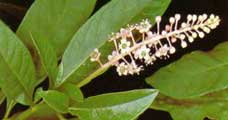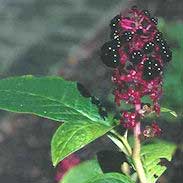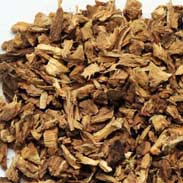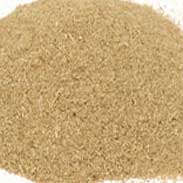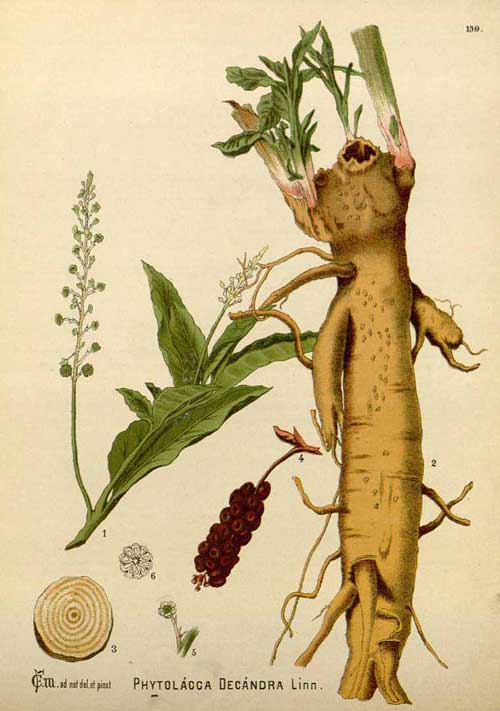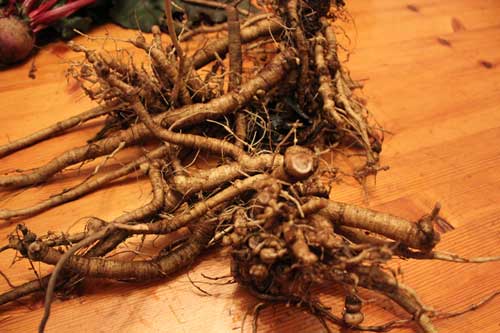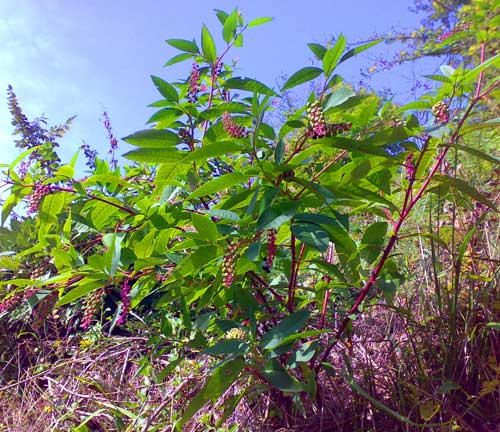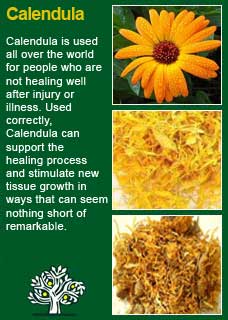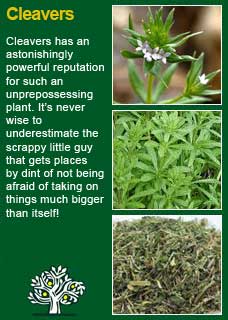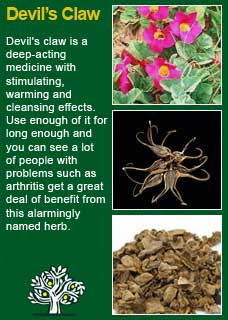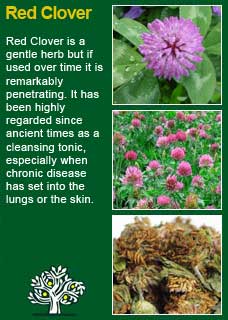
|
|
||||
| Our Pages ABOUT CONSTITUTIONAL MEDICINE
|
In herbal medicine we use the roots of 'Poke'; an impressive looking plant reaching 4 meters in height and having strong purple-green stems that support flourishes of drooping flowers eventually giving way to large clusters of purple berries.
Poke Root is regarded as one of the most important of the American indigenous plants and one of the most striking in appearance. M. Grieves writes headaches of many sources are benefited by it... the extract has been used in chronic rheumatism and it is also stated to be of undoubted value as an internal remedy in cancer of the breast. As with all herbal authors on Poke Root Grieve emphasises the need for caution describing its potential action in higher doses as a slow emetic and purgative with narcotic properties. Poke Root is a powerful cleansing remedy, used to help especially when the lymphatic system has become congested. This may show up in the early stages as being chronically tired with slightly swollen glands but by the time the lymph has really sludged up things may have gone all the way down to advanced rheumatism, respiratory disease or auto-immunity issues; conditions that Poke Root has traditionally been used to treat. The following is an excerpt from a detailed description of the actions and indications by one of the great Eclectic physicians of the late 19th century; H Felter From earlier in the 20th century another great Eclectic physician, Finlay Ellingwood, writes the following on Poke Root 'this agent must now have especial attention in its influence in the treatment of acute inflammations of the throat. It makes but little difference what forms of throat disease we have, from the simplest forms of pharyngitis, through all the variations of tonsillitis, to the extreme forms of diphtheria, this remedy may be given in conjunction with other indicated agents. But few of our physicians neglect its administration in these cases, and they are unitedly profuse in their praises of its influence. If there be an infection of the local glands of the neck, from the throat disease, the agent should be applied externally, as well as administered internally. In the treatment of goitre there is a consensus of opinion concerning the value of this remedy, but it is almost universally administered in these cases, with other more direct remedies. Dr. J. V. Stevens is enthusiastic in his opinion that adenitis needs no other remedy than phytolacca americana. Whatever the cause of the disease or of however long standing, he saturates the system with this remedy, and persists in it, applies it externally and claims to cure his cases. He has used it for many years with success. Others combine other active alteratives as general conditions demand. King's Dispensatory writes 'Physiologically, Poke Root acts upon the skin, the glandular structures, especially those of the buccal cavity, throat, sexual system, and very markedly upon the mammary glands. It further acts upon the fibrous and serous tissues, and mucous membranes of the digestive and urinary tracts. In certain conditions of the system which might come under the head of dyscrasia (bad blood), it proves a most valuable alterative. Scrofulous, syphilitic, and rheumatic conditions are invariably benefited by it. It is best suited to chronic rheumatism, and syphilitic and rheumatic joint affections. The condition which calls for it is one of indolent action of the skin; it is often indicated in chronic eczema, syphilitic eruptions, psoriasis, tinea capitis, favus, and varicose and other ulcers of the leg. In diseases of the mouth and throat it is highly esteemed. It is useful in acute and chronic mucous affections, as in tracheitis, laryngitis, influenza, catarrh, and especially in those affections where there is a tendency to the formation of catarrh and phlegm' The British Herbal Pharmacopoeia (BHP) describes Poke Root's actions as antirheumatic, anticatarrhal, mild anodyne, emetic & purgative in large doses, and says it is indicated for chronic rheumatism, chronic respiratory catarrh, tonsillitis, laryngitis, adenitis, mastitis & mumps and specifically indicated for inflammatory conditions of the upper respiratory tract, lymphatic adenitis. The BHP suggests a dose of 0.03 - 0.3 gms or by decoction and recommends a tincture in the ratio of 1:10 in 45% ethanol with a dose of 0.2-0.6mls (approx 4-12 drops) Thomas Bartram describes Poke Root's actions as 'lymphatic, alterative, anti-neoplastic, parasiticide, anti-rheumatic & anti-inflammatory'. He gives many potential uses for it, including 'swollen glands and lymph nodes, mumps, tonsillitis, sore throat, inflammation of prostate gland, ovaries or testicles. Chronic irritative skin disorders, ringworm, eczema, psoriasis, pityriasis, acne & lupus. Ulceration, internal or external, polymyalgia, rheumatism, arthritis. Breasts; mastitis, mammary abscess, fissured nipples, fibrotic nodules and hard lumps that have been diagnosed benign. Chronic fatigue syndrome. Obesity; eliminating excess fat in fatty degeneration. Mercurial poisoning from dental amalgam in teeth fillings. Lipoma with persistent use. Some forms of cancer spread via the lymphatic system for which Poke Root has an inhibitory effect'. Bartram suggests a dose of not more than 8mls in a week.
~ Unsurprisingly, given its potential for toxicity, there are no clinical studies on people using Poke Root but there has been a little laboratory research that has shown that the saponins in Poke Root have anti-inflammatory activity (Woo WS, Shin KH, Kang SS, Soul Tachakkyo Saengyak Yonguso Opjukipip 1976;15:103-106) ~ It has also been conjectured that the immune system effects of Poke Root may be caused by the presence of substances called mitogenic lectins in the plant which may interact with gut associated lymphoid tissue and may be absorbed in small quantities. These lectins are used pharmacologically to stimulate cell division and increase the production of antibodies within white blood cells (Basham TY, Toyoshima S, Finkelman F et al. Cell Immunol 1981;63(1):118-133) ~ The authors, titles and the 'where-and-when' published of over 70 further studies and articles on Poke root are listed in a PDF found here
For some years now, against this proven and safe way of herbalism, there has been a rising tide of excessive caution and scare-mongering in many parts of the world. The same authorities that, not so long ago, decried herbal medicines as ineffectual, have now taken up a different adversarial position; that they are dangerous substances that should only be prescribed by Doctors, who of course have zero training in them. Unfortunately, the same unnecessary fear and worry has crept into many natural health websites and popular publications on herbs. Herbs that we have safely used for thousands of years, that have no reports of adverse reactions in the medical literature despite widespread use by millions of people, are suddenly described as contraindicated because of something that should have been seen as completely unimportant, or at the utmost a merely theoretical concern, such as a laboratory study on one of the herb's constituents to use an all too common example. I wonder sometimes if the writers of such articles feel that the herb will be more deserving of respect if it is thought to be a little bit dangerous, in other words more like a drug than something that has simply come out of the earth and been used by ordinary people for generations beyond count. There is just so much misinformation about herbal medicine on the internet now. Ludicrous claims and cautions abound in equal measure; it seems like one group are trying to make money out of the public whilst the other are busily trying to scare them off. I have to believe that the kind of reader who takes the time to read pages on herbs that are as extensive as this one is much less likely to be swayed by marketers or misinformers. I hope that you will keep your wits about you if you get conflicting opinions from people who have never really got to know these herbs, who have never worked with them, or learned how to use them safely and effectively. I want to remind you that the reason that herbs can never be patented and owned by any individual or corporation is because they are, and always will be, the People's medicine. They belong to all of us and it is my great hope in sharing this work that you will learn how to use them wisely for yourself, and the people you care for. Be safe, but do not be afraid.
The first rule of medicine is; primum non nocere, ‘firstly do no harm’. I have great respect for Poke Root and have used it thousands of times in my work with people who need deep cleansing support; however this is a herb that must be used with great care. By the time you are taking enough Poke Root for it to do its healing and cleansing thing, there is a narrow threshold before it starts acting as a poison. Too much Poke Root can definitely do considerable harm, but the much more common mistake made with Poke Root is to use it before the body is ready for the kind of cleansing it can produce. Unless it is used in very small dosages where its action will be rather diluted it is best to make sure the bowel and kidneys are working well before using Poke Root at any kind of strong medicinal dose. Delving into its historical use, or simply reading the list of potential uses in, for example, the snippet from Bartram in the 'how it has been used' section above, one could easily say 'how could this remedy possibly be good for so many different kinds of problems?' It is not that the herb can cure all these conditions, rather that by virtue of it so powerfully influencing the cleansing process, it helps the body to heal itself. In my own practice I will often give a drop or two and listen carefully to my patients pulse to gauge whether it strengthens or balances the pulse and also to get a sense of the degree of sensitivity - this ancient process is talked about in more depth here When I then use Poke root I typically measure the dose in drops per days and depending on the person I might use as little as 2 or 3 drops in a dose or as much as 12-15 drops in rare cases of acute need. This is from a fairly potent 1:5 tincture made in 40% ethanol. The average amount that I use in a treatment formula equates to about 4 drops per dose. You can see this dose practically demonstrated in the sample formula given in the page on detoxification found here I always combine it with other herbs in formula. Likewise, the length of treatment could be as little as a week or it could be much more. Each time you use it you have to be thinking about how it will best work for that one individual. It is a herb to use with great care and respect and a willingness to appreciate how it may best exert its ability to influence that singular person's healing process... Poke Root combines powerfully with Calendula and Cleavers to achieve deep and lasting cleansing for chronic stuck conditions. It also can work exceptionally well with Devil's Claw for arthritis and with Red Clover for stubborn skin problems.
Much of the information here about the traditional uses of Poke Root is consistent with the model of thinking whereby one may treat problem A with plant B. There is value in this approach, especially in how it helps us pass on useful knowledge to one another, but it falls short in one vital area; and that is that people are not all cut from the same cloth! Something that works brilliantly for one person may do less for another -- why is this? Part of the reason is that people vary in their constitutions as to whether they are either hotter or cooler and, at the same time, either dryer or damper. This useful and rather fascinating subject is introduced further here Another big part of using the right herb when it is most needed comes from understanding the need to treat what is going wrong for the person that had led up to their getting a health condition. In this light, Poke Root can particularly offer its benefits when a cleansing action is needed in the 'cycle of healing', more about this here
Please understand that I cannot advise you, including on products or dosage, without seeing you in person in my clinic but for ideas
on how you might find a good herbalist in your area read here |
|
|
© 2011 R.J.Whelan Ltd
